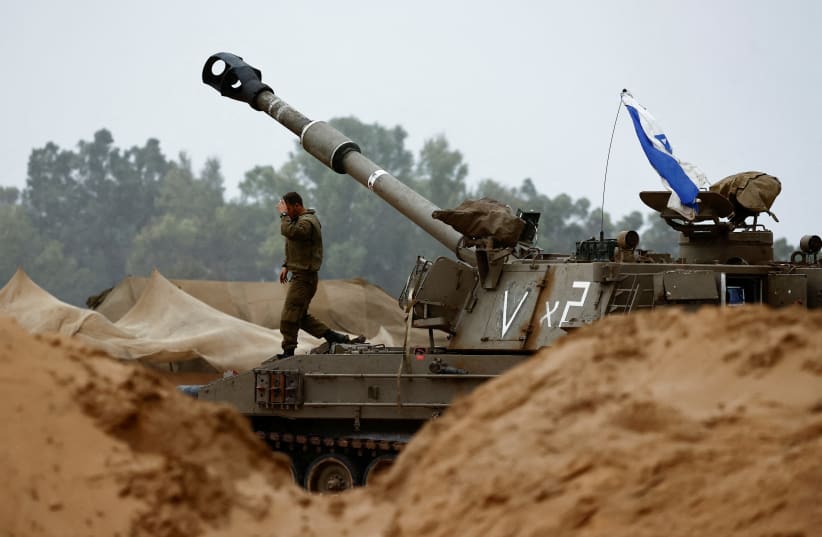From a number of sources, there are at least six key points which can help us to understand what the future may hold, the day after the war.
1. Annihilating Hamas or eliminating effective military control?
In the inner chambers of power in Israel, despite tremendous success in northern Gaza and the many tough-sounding public statements, the reality is setting in that Hamas will not be annihilated.
Rather, the hope is to harm its command level, rank-and-file-level, and resources, so substantially that it is completely unable to return as an effective unified military force which could retake Gaza.
The question which no one truly knows the answer to – with the public numbers of Hamas’s dead still hovering at many thousands (certainly under 10,000) out of 30,000 – is whether even that is achievable, or whether the best case is eliminating Hamas’s current rule, and giving someone else a chance, but without being able to kill and arrest enough of its forces pre-insurgency (which is expected at some point) to fully negate a comeback at some point down the line.
2. Northern Gaza is a dead zone
Northern Gaza is unrecognizable to its pre-war state. Structures have been bulldozed and destroyed, in no small part because Hamas booby-trapped houses and roads, beyond a threshold at which Palestinian civilians will be able to return. It will not just be a matter of rebuilding homes, but basic infrastructure, which will impact all the diplomatic post-war Gaza issues.
3. Delay in elimination of Yahya Sinwar
Shortly after the war started, there was a spike in calls for eliminating Hamas Gaza Chief Yahya Sinwar; since then, these calls have gotten noticeably quieter. With Israel reportedly close to a deal over hostages, in which it would need Sinwar, getting hostages back may likely mean a significant delay in killing him.
Given his position and history, Sinwar is a significant military target. Multiple instances in which the IDF allowed Hamas forces to flee South suggest this could be an open strategy. That said, Israel has sometimes given such leaders a temporary reprieve, but then circled back to kill them once whatever diplomatic significance they held ended.
4. Balancing destroying Hamas with saving hostages
Defense Minister Yoav Gallant and some portions of the IDF may have a different balance than National Unity party War ministers Benny Gantz and Gadi Eisenkot of trying to get hostages back, but with a greater emphasis on destroying Hamas, even if the two issues could also help each other in some scenarios.
Prime Minister Benjamin Netanyahu will likely eventually have to choose a side, with so far him seeming to side more with the Gallant camp. At the same time, his more recent speeches have shown greater openness to a deal for hostages, and the ongoing delay of a larger invasion of the South is likely connected to this.
5. Israel wants to globalize problem of Gaza, but is refusing the world’s solutions
Top Israeli officials are increasingly pushing the question who will control Gaza the day after the war ends, to avoid any possibility of Israel getting stuck occupying it – which it does not want to do – and to give Gaza a better post-war chance of rebuilding without the return of Hamas.
However, Netanyahu, and it appears Defense Minister Yoav Gallant, are not interested in the PA’s involvement, and the Arab countries, who they would hope would take the issue on, have said they will not clean up a mess they see as made by Israel for invading too hard.
If Israel refuses world post-war solutions, and the world refuses Israel’s post-war solutions, the Jewish state could be stuck with either belatedly accepting the world’s ideas, being stuck with an occupation it did not want, or withdrawing without a full and proper mechanism in place to prevent Hamas’s return.
6. Restoring deterrence vs. Hezbollah in the North?
In some ways, Gaza may still prove to be the long-term sideshow. Hezbollah, with its 150,000 rockets, including precision guided missiles, is a much deadlier enemy.
The government declined Gallant’s request to launch a preemptive strike on Hezbollah near the start of the war to take advantage of a rare moment of enhanced IDF readiness and dynamism in the region, and it is unclear how it will convince northern residents to return to their homes after the war ends.
There is hope that the power of the Gaza invasion and its not-insignificant counter attacks on Lebanon – killing now close to 80 of Hezbollah’s forces – will restore deterrence. But another way of viewing the issue is that Hezbollah will have gotten away with firing over 1,000 times on Israel, without paying any monumental price for it.
Northern residents may worry then that the miscalculation will be the same. Israel is putting this issue off for now, but it is hovering, and dangerously close.

